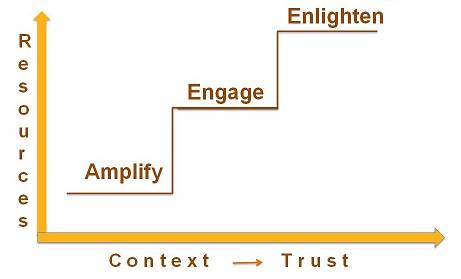Content Curation Evaluation Framework, Version 3
What to Consider When Evaluating Content Curation Platforms for Marketing
Gain insight into the issues content curation platforms address for marketers, information consumers, and IT staff, and learn about the evaluation criteria relevant to marketers’ selection of the right platform.
Since 2009, the content curation marketplace has developed quickly. Content curation platforms enable marketers and publishers to identify, aggregate and comment on the most relevant and timely articles, blog posts, and media on a topic of interest to a specific customer segment.
More than twenty suppliers have begun addressing this marketplace since 2009. Many of these solutions are now “enterprise-class” solutions—they provide curated content to a community or a target audience, not just individuals. Most of these offerings are delivered as Software as a Service (SaaS). Marketers use these content curation platforms for reasons ranging from tracking competitor activities to managing social media participation, nurturing customer communities, and building a thought leadership position.
NETTING IT OUT
Content curation jumped into marketers’ vocabulary in 2010. Brands that are counseled to “act like publishers” find that curation provides a way to use third-party content in conjunction with their own original content to draw attention on the Web. Using content curation, companies can become the “go to” resource on issues of keen concern to their customers with a smaller investment than would be required if using all original content. By curating content well, companies draw customers to them and keep them coming back, creating a community of customers with shared interests.
The last four years has seen an explosion of content curation solutions. The majority of the solutions provide individual capabilities. That is, they make it easy for an individual to find and share content. Enterprise solutions, the subject of this report, provide very different functionality. Many of the enterprise content curation solutions started out serving major publishers’ need for special topic pages and then discovered the significant demand for content in today’s Web and social media marketing.
SaaS offerings and a price range from $99 to a few thousand a month make content curation tempting to marketers for a variety of reasons. Marketers use these platforms to build an audience that eventually buys, to establish a thought leadership reputation, to monitor customer issues and competitor activity, to provide fodder for regular communication with customers, and more. What all of these solutions have in common is their focus on taming the flood of Web information and turning it to a marketing purpose.
The evaluation framework presented here will help marketers draw distinctions among suppliers’ offerings and aid in their selection of the right platform for their uses. We advise marketers to pay particular attention to the capabilities that facilitate experimentation, boost productivity, and enhance the information consumer’s experience.
Content Curation Strategies

Marketers use three primary strategies to achieve their content marketing goals.
THE NEED FOR CONTENT CURATION
Too Much Content, Not Enough Context
Information has become the currency of influence on the web and in marketing. It has been shown to move customers to action more reliably than free gifts, discounts, trials, or samples. However, the explosion of digital information on the Web has made it difficult and time consuming to find relevant, useful, and timely information as well as challenging to make your content stand out. This has created problems for both information consumers and marketers.
Information consumers face an overabundance of information and lack the tools to efficiently find what they need. Determining whether information on the Web is pertinent, up to date, reliable, and complete has become a major challenge for most consumers as they seek to respond to events in real time and draw insight from a body of knowledge or chain of events. As a result, information consumers often seek a handful of trusted sources that they can rely upon for the majority of their information on a topic. Many bring information from trusted sources together through Google Alerts, RSS feeds, and other tools that enable information consumers to tailor a view of Web information that comes closer to their requirements. Still, the questions remain: What am I missing? What does this mean? How does this relate to some other concern of mine? What do others think of this?
Marketers face the same challenges as information consumers along with two additional issues. First, marketers who use expertise in a particular area to differentiate their company and provide a service to their customers are undermined by the explosion of content on the Web. How can their content be found, stand out, and be relied upon by customers? How can they afford to keep up with their customers’ insatiable demand for content?
Second, marketers are well aware of the power of third-party reviews and analyses, so they often look for ways of incorporating third-party content into their web and social media presence. How can they easily ..
Sign in to download the full article
0 comments
Be the first one to comment.



